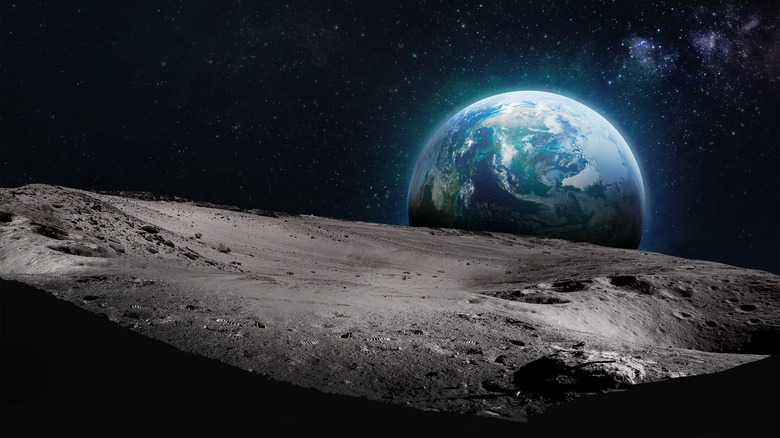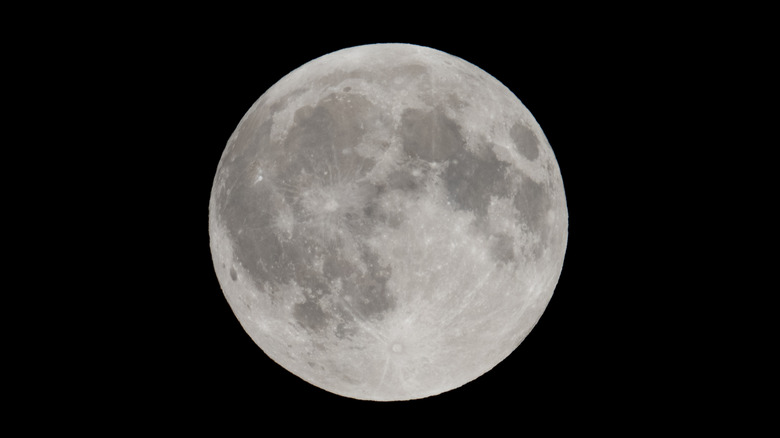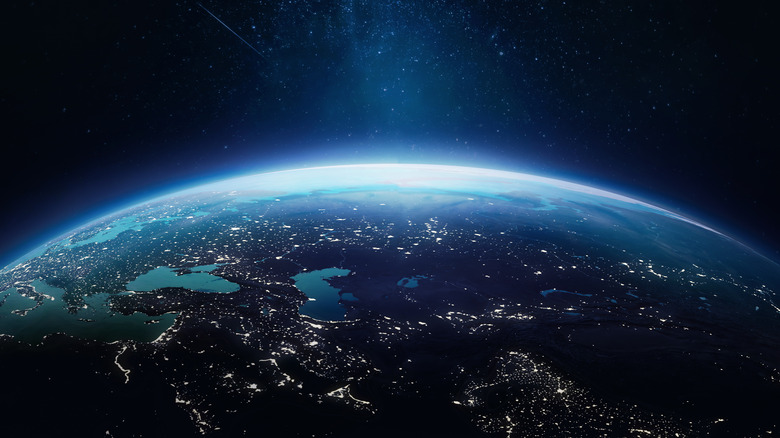The Moon Can Get Hotter And Colder Than Anywhere On Earth
Earth is a vast planet with some pretty extreme temperatures. The hottest temperature ever recorded on Earth was 134 degrees Fahrenheit in 1913 in Furnace Creek, California, while the coldest recorded temperature of -128.6 degrees Fahrenheit was taken in 1983 in Vostok, Antarctica (via Arizona State University). While these temperatures are extreme for life on Earth, they are nothing compared to the wild temperature swings found in other parts of space. Earth's own moon has hotter and colder temperatures than the planet.
The side of the moon facing the sun can get extremely hot, around 212 degrees Fahrenheit. But at night, temperatures can plummet to -279.4 degrees F (via Space). These temperature extremes are part of the reason why Apollo astronauts had to wear special spacesuits to regulate their body temperatures, in addition to providing them breathable air while on moonwalks. But what causes the moon's daytime and nighttime temperatures to be so vastly different? The answer lies in its lack of atmosphere, which prevents it from regulating its surface temperature.
The Moon doesn't have an atmosphere to trap in heat
Unlike Earth, the moon does not have an atmosphere. On Earth, the atmosphere gives life on the planet air to breathe, but it also helps to trap in heat from the sun. The way Earth's atmosphere works is similar to a greenhouse or a blanket, trapping in heat from the sun to keep things from getting too cold (via National Geographic). If Earth did not have its protective atmosphere, nighttime temperatures would be so cold that the planet would not be able to sustain life.
If an atmosphere traps too much heat, that, too, can have negative effects, such as causing the global temperature to increase too much. This phenomenon, known as the greenhouse effect, occurs when the atmosphere is too thick and has too much carbon dioxide. Venus' atmosphere is an example of a runaway greenhouse effect, where the atmosphere has caused the planet to heat up too much, resulting in global temperatures of around 900 degrees Fahrenheit (via NASA). The Natural Resources Defense Council warns that Earth may be headed toward a similar path if humans continue to create too many emissions of carbon dioxide and other greenhouse gases.
Earth's atmosphere protects life in more ways than one
In addition to keeping the planet warm, the Earth's atmosphere has several other ways that it works to sustain life. First, the atmosphere contains important chemicals like oxygen, that allow lifeforms to breathe. Second, the atmosphere helps to protect the Earth from powerful, damaging UV rays (via National Geographic). These UV rays are emitted by the sun and can cause damage to the skin with too much exposure, but the atmosphere helps to mitigate these effects.
On the moon, the lack of atmosphere doesn't just mean extreme temperatures. While the Earth's atmosphere helps to protect life on its surface, the moon is the opposite. It has no air to breathe and no protection from the sun's UV rays. This makes it impossible for life to live on the moon without some sort of protective suit or habitat. The lack of protection from UV rays is especially harmful, as long term exposure in such high quantities can lead to cancer and other health issues (via the American Cancer Society).


